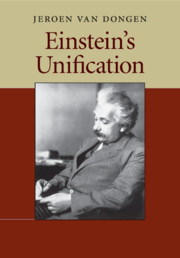Book contents
- Frontmatter
- Contents
- Acknowledgments
- Introduction
- 1 Formulating the gravitational field equations
- 2 On the method of theoretical physics
- 3 Unification and field theory
- 4 Experiment and experience
- 5 The method as directive: semivectors
- 6 Unification in five dimensions
- 7 The method and the quantum
- Conclusion
- References
- Index
1 - Formulating the gravitational field equations
Published online by Cambridge University Press: 05 May 2013
- Frontmatter
- Contents
- Acknowledgments
- Introduction
- 1 Formulating the gravitational field equations
- 2 On the method of theoretical physics
- 3 Unification and field theory
- 4 Experiment and experience
- 5 The method as directive: semivectors
- 6 Unification in five dimensions
- 7 The method and the quantum
- Conclusion
- References
- Index
Summary
On 25 November 1915, Albert Einstein presented the final version of the field equations of the general theory of relativity to the Royal Prussian Academy of Sciences. 1 These equations were generally covariant: their form remained unchanged under arbitrary transformations of the space and time coordinates. This was a mathematical manifestation of Einstein's principle of equivalence, which held that the state of affairs in a homogeneous gravitational field is identical to the state of affairs in a uniformly accelerated coordinate system.
Einstein's first publication that contained the principle of equivalence appeared in 1907. It was included in a review paper of his relativistic account of electrodynamics of 1905. The principle immediately proved its heuristic value: on its basis Einstein already proposed in the same article the existence of a gravitational redshift of light, and the bending of light trajectories in a gravitational field. Nevertheless, eight years would pass between the first formulation of the equivalence principle and its final vindication in 1915, when it acquired a firm footing in the field equations. During those years, Einstein remained nearly silent on gravitation from late 1907 until June 1911. He did not publish any substantial articles on the subject and, even more surprising, he hardly discussed it with his correspondents.
- Type
- Chapter
- Information
- Einstein's Unification , pp. 6 - 35Publisher: Cambridge University PressPrint publication year: 2010



